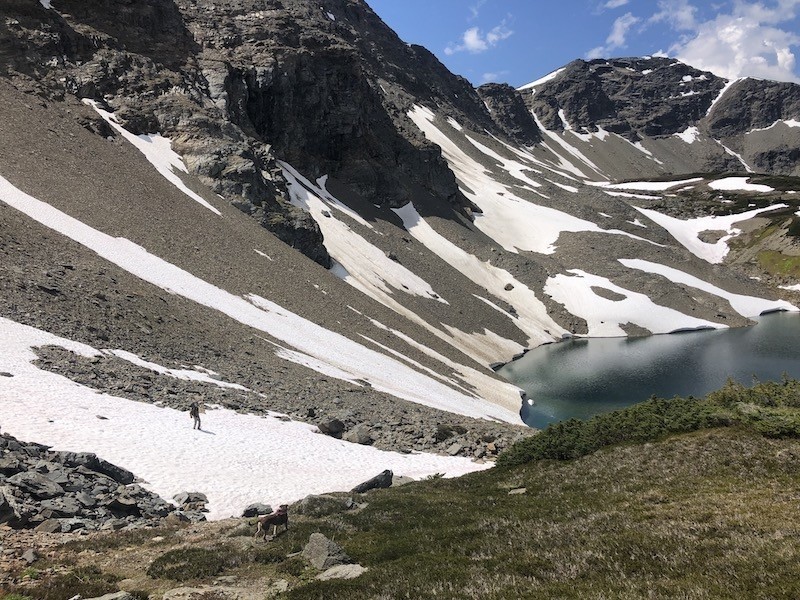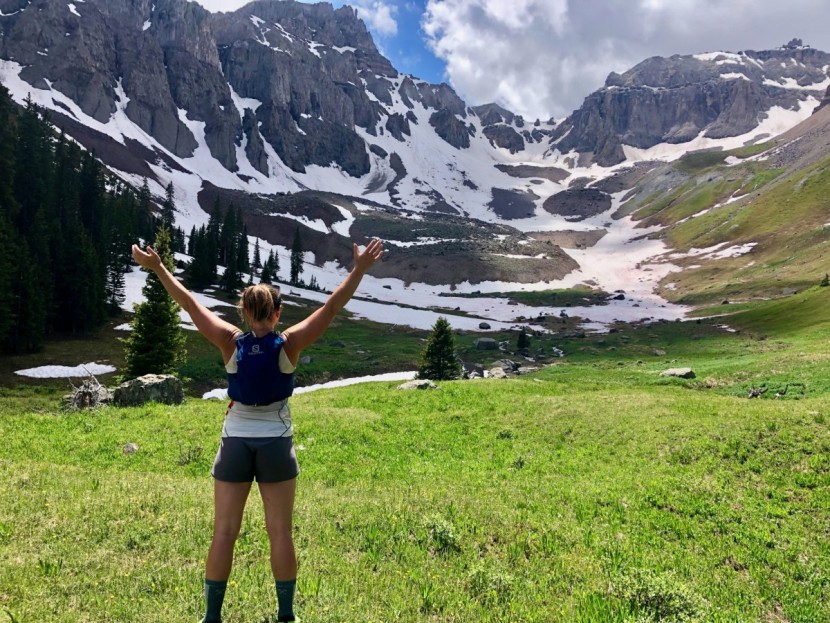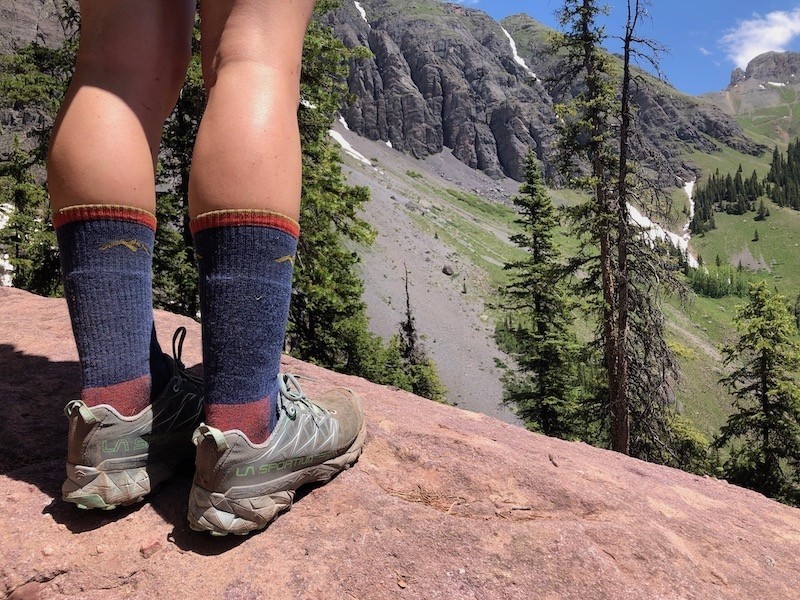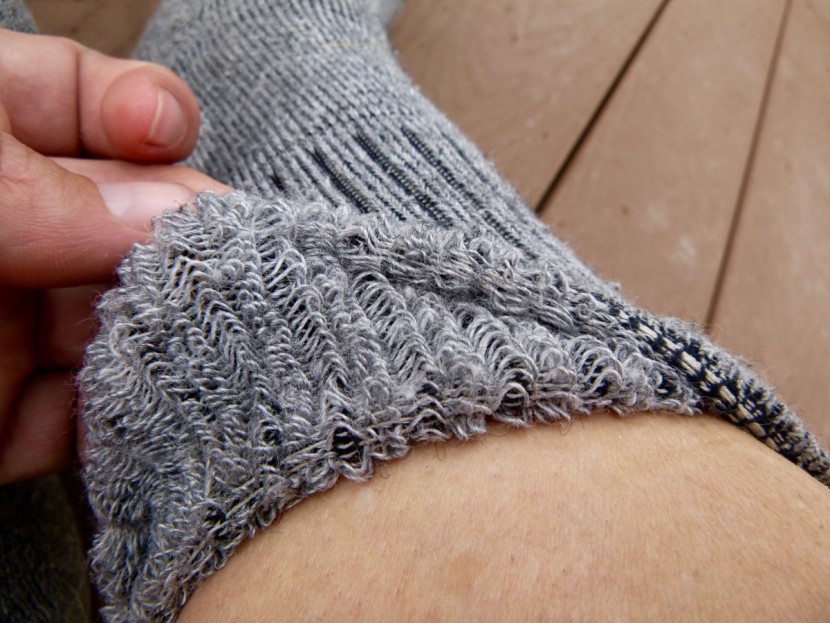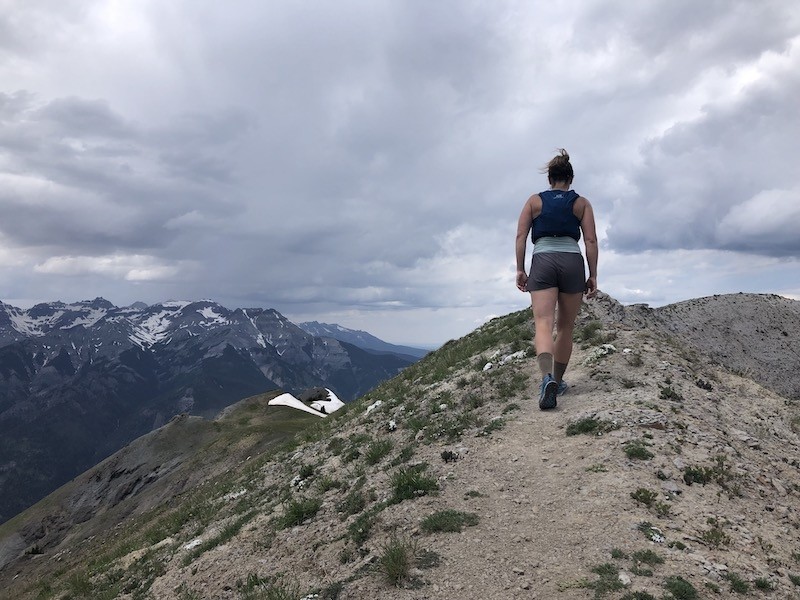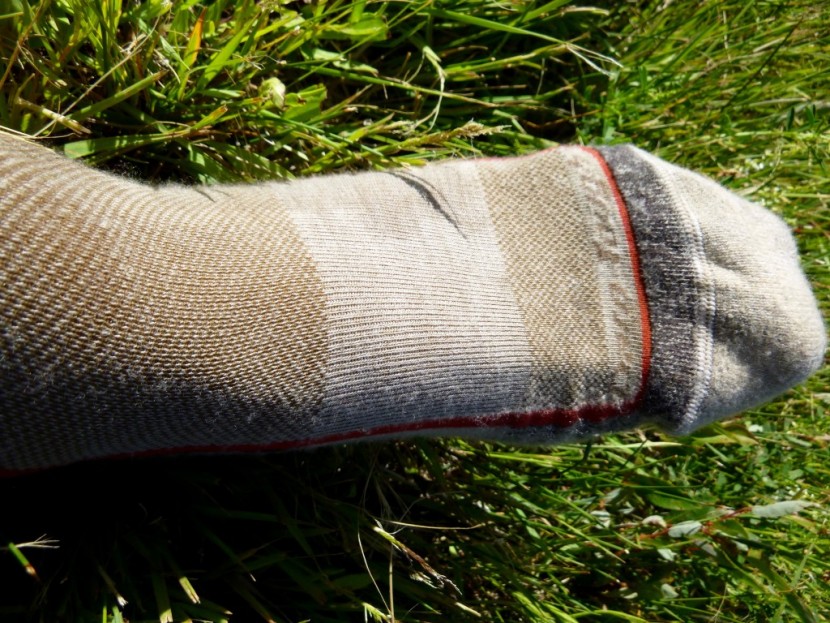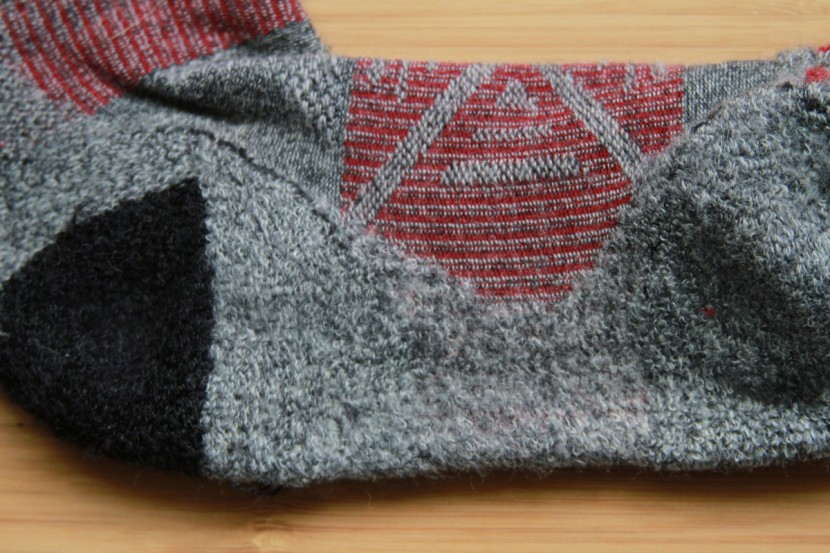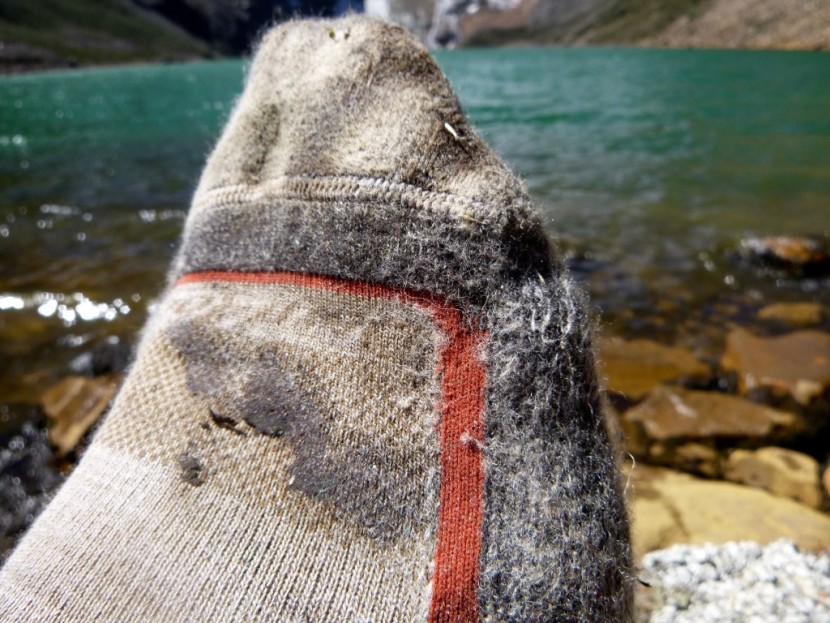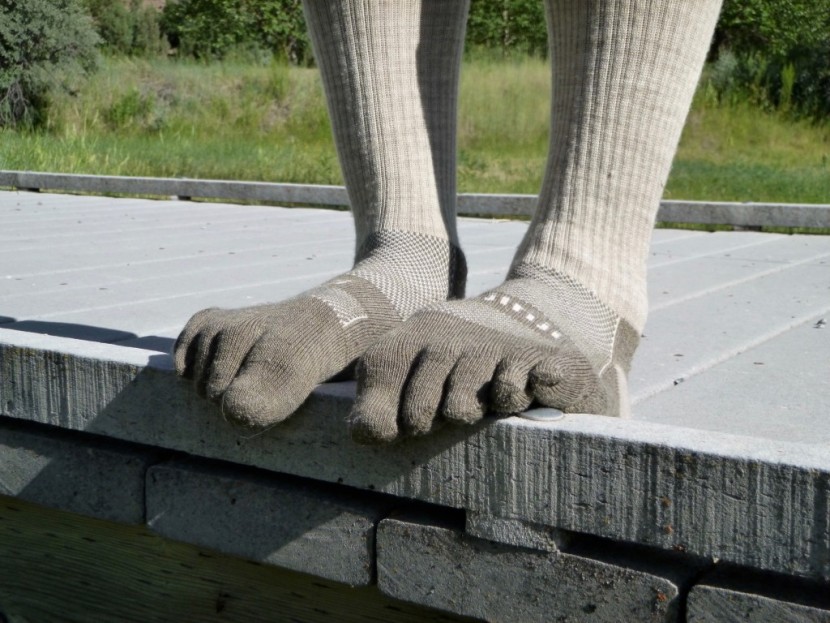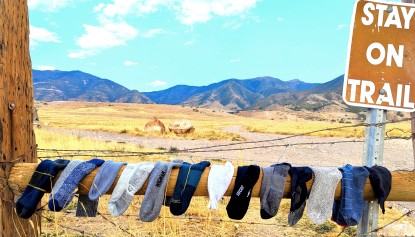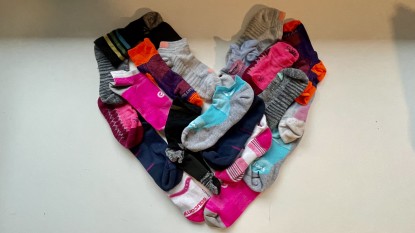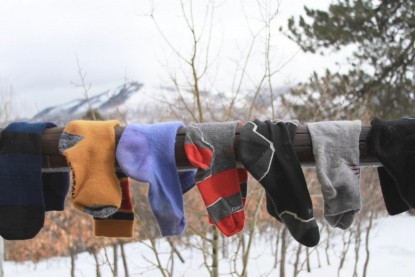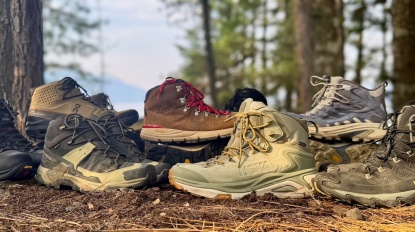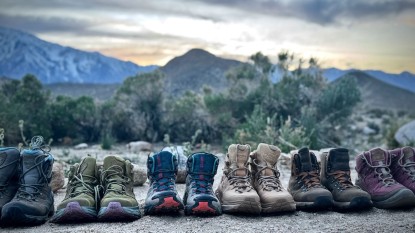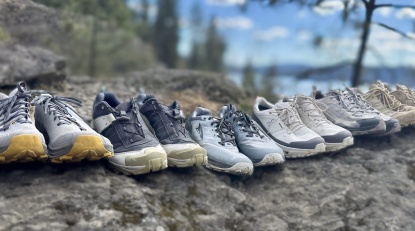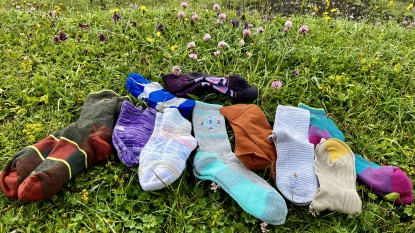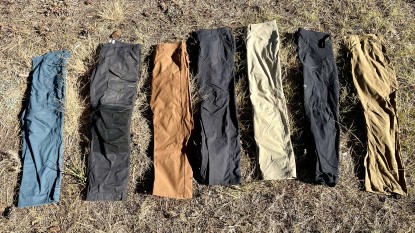As you dream of trekking to azure alpine lakes or through the ragged and gnarly terrain of remote deserts, consider the items required to make your trip flawless. Along with other essentials, you should consider a pair (or two) of sturdy hiking socks. Finding the perfect pair may prove to be difficult, especially with such a saturated market. In this article, we will help you identify the best hiking socks to match your needs.
Types of Socks
There are many different types of socks on the market, which have different anatomy and differences in construction. Take a look below to see what kind of socks you might encounter on the quest to find the best sock for you. Determine what you are looking for, then read on to learn about the different components for a great hiking sock.
Running Socks: These are usually constructed of materials like cotton, synthetics, or wool-blends to enhance breathability and wicking power. Lengths vary, and they range from light to mid-weight. Best for trail running and road running.
Related: Best Running Socks
Skiing & Mountaineering: Constructed of wool and synthetic materials with a longer length to accommodate a tall ski or mountaineering boot. These socks typically are much warmer and breath well, ranging from lightweight to heavyweight. Best for alpine activities including ice climbing, mountaineering, and skiing.
Related: Best Ski Socks
Hiking Socks: Constructed of wool and synthetic materials with varying lengths and weights. Most hiking socks accommodate the use of both hiking boots and hiking shoes, though some only are constructed for use with hiking shoes. These vary in lengths and range from lightweight to heavyweight depending on what you are looking for. Best for day hiking, fastpacking, long-distance trail running, and backpacking.
General Use Socks: These are the typically socks you'd see in bulk sold at a grocery or department store. They are typically constructed with a cotton material that is great for everyday use but does not perform well in cold or wet weather. Best for everyday wear to work or school, and their price can't be beat.
Liners: These synthetic socks (constructed of thin polyester material) are used to enhance wicking ability for thicker socks or to avoid the potential for blisters. Liners are a great option to wear with a pair of compatible mountaineering or hiking socks. Buy a pair if you are susceptible to blisters and see if they make the difference!
What to Consider in a Great Hiking Sock!
So you've determined that a hiking sock is in the cards. It's important to know what considerations to make when purchasing a hiking sock. First, determine what you're using your sock for and the type of conditions you are going to put it through. For example, you're going to choose for a heavier weight fabric if you're going to tackle a massive thru-trails like the Pacific Crest Trail as opposed to a lightweight fabric designed for day hiking. In this section, we discuss key sock features that are important for the construction of any great hiking sock. Specifically, we explore the pros and cons of common fabrics and different weights that you might find in the stores and online.
Fabrics
The material of a sock is the key to its breathability, warmth, and affinity to keep you dry when it's cold and wet outside. You want to look for a sock made of a wool (i.e., merino wool) or a synthetic polymer (i.e., polypropylene, acrylic, polyester). These materials have properties that use water as an insulator to keep your feet warm (even if it's cold outside).
In your search, avoid cotton or cotton blends. While cotton is a fine option for hot weather, it does not insulate when wet. Even though it dries faster than wool on a warm day, it will keep your feet cold and clammy in cold weather. This could lead to potentially life-threatening situations…as per the popular phrase “Cotton Kills.” That said, make sure you're buying synthetic or wool materials. Finding a sock with stretch materials like spandex, lycra, or nylon component will enhance breathability and provide a better fit overall.
The two biggest categories of fabrics include Merino Wool and Synthetics (a form of polyester). Some of the best socks feature a blend of the two with a higher concentration of wool.
Merino Wool
With a wide range of thermoregulation, this material provides outstanding comfort and close-to-the-skin comfort. Merino Wool is unlike regular wool because it does not itch and it is much more durable. Also, it insulates when wet, providing better warmth than synthetic options after a sweaty day or after spending the day in the rain or snow. The fibers do a great job at wicking away moisture and the material, in general, does not get as stinky as synthetic fabrics. If you seek a sock that is super warm with the best performance, seek a sock primarily made of Merino Wool. For example — the Darn Tough Hiker Full Cushion, our Editor's Choice or the REI Co-op Lightweight Merino Crew, with a 79% merino wool make-up.
Synthetic Materials
Polyester and Polypropylene are the two main synthetic fabrics you'll encounter in the sock market. This synthetic fiber is more durable than Merino Wool and dries quicker in the field. That said, synthetic fabrics are not as warm as Merino wool and tend to lose both insulation and wicking capabilities at very low temperatures. Therefore, they don't insulate as well in colder weather. If choosing a cold-weather sock, look at Merino wool options. However, if you need something for warmer weather or hiking in the Fall or Spring, a synthetic sock should do. Synthetic options tend to be less expensive with better longevity overall. We found this to be true in our testing when looking at the performance of the Wigwam Hiking Outdoor Pro — our favorite synthetic sock in this review.
Blend Materials
When looking at a sock's materials, you might find other fabrics like Nylon, Elastane, Acrylic, Spandex, and more. These materials are synthetic materials built to increase durability and wicking power. The Merino wool provides warmth, the Polyamide provides durability, while the spandex provides shape to the sock. Below is a quick run-down of the benefits of each blend material and its benefits.
Nylon: Increases wicking capabilitiesElastane & Spandex: Provides an elasticity that provides a better fit.
Acrylic: This synthetic fiber does not absorb moisture similar to certain wools. Therefore, companies will incorporate these materials to reduce the bulk of a primary material (like wool), which still retains its ability to wick away moisture and reduce absorbency.
Material Weight
Hiking socks are divided into four different categories based on sock thickness. Each weight provides a different function or niche in the exercise game. Take a look at the different options below. We outline some key properties of each type of sock.
Ultra-lightweight
- Conditions: Hot to warm weather
- Trip Length: Day hikes or a few hours out on the trail
- Best Uses: Fastpacking, hot summer weather, day hiking, running, technical alpine climbs
- Description: An ultra-lightweight sock is perfect for running and hiking in hot to warm weather. It prioritizes breathability and minimal padding, so it is much thinner than other sock weights.
Lightweight
- Conditions: Warm to cool weather
- Trip Length: Day Hikes
- Best Uses: Hiking, backpacking, running, biking, general outdoor recreational uses
- Description: This weight is specific to warmer conditions and higher intensity activities. A sock such as the Darn Tough Light Hiker Micro Crew is our favorite durable, lightweight hiker that prioritizes wicking and breathability through its thinner materials and breathable panels. Perfect for hiking, backpacking, or running in cool to warm weather. Not suited for use while hiking in the coldest months of winter.
Midweight
- Conditions: Warm to cold weather
- Trip Length: Short to long days, multi-day excursions
- Best Uses: Hiking and backpacking, versatile for most weather and uses
- Description: Features more cushioning along the heel and forefoot for longer days on the trail. Also, they are thicker to insulate in cool to cold weather. This is by far the most versatile sock category and a good choice if you're looking for an all-around use hiking sock. For example — the Farm to Feet Damascus sock is a midweight option perfect for everything from day hikes to long thru trails.
Heavyweight
- Conditions: Cold weather
- Trip Length: Day to several days on the trail.
- Best Uses: Winter or Cold-weather Sports
- Description: A heavy-weight sock has heavy padding in the forefoot and heel to prioritize warmth and comfort. It also uses lots of material throughout the length of the sock. This weight is typically less breathable and doesn't wick as well as lighter socks. A liner is recommended for use if you are prone to blisters. This type of sock is perfect for colder weather or if you plan to tackle a thru-trail that requires hiking day after day for a week or more on end.
Sock Features
In this section, we take a look at some other key features to consider when purchasing a hiking sock, like how high they come up the leg, strategically-placed panels for compression and breathability, seam placement, and gender-specific fit.
Sock Length
Socks come in all different lengths and sizes, intended for different purposes. Taller socks are more compatible with hiking boots and provide more overall warmth and protection. These are best used if you plan on hiking in cooler conditions or using a hiking boot. If you know you'll be bushwacking or hiking in tall grasses, we recommend a taller sock.
Shorter socks are best if you prefer to use a pair of hiking shoes and prefer enhanced leg breathability. Shorter socks don't offer as much protection and are not compatible with most hiking boots. Due to less coverage, they also keep your legs cooler.
Compression Panelling
Socks that offer compression paneling around the arch and heel typically provide a better fit that does not slip. The compression also helps to reduce the use of bulky materials for a thinner and more streamlined sock that won't bunch or cause discomfort.
Breathability Panels
Look for a sock that uses panels to enhance the breathability of the sock. Most socks will advertise this and can be seen around the arch of the foot, where you might sweat the most. If you are in cold conditions, this is important to transport sweat away from the foot, so it doesn't keep your feet cold when you slow down. This is also important in hot weather to keep your feet dry and cool on the move.
Seamless Design
Most hiking socks offer a seamless design which is a flat stitch that will not bunch or chafe. In addition, the seam should sit on top of the foot, not at the tips of the toes. While most hiking socks have this feature, but sure to double-check.
Fit
Be sure to order socks in the correct size using the associated company's sizing chart. When trying them on, be sure to pay attention to the fit specifically in the heel and toe. The heel should sit in the correct place, with little to no material at the toes. If there is additional material, this could bunch, causing chafing and blister issues. If the sock, on the other hand, is too short, you'll find yourself reaching down to pull it up while on the move.
Gender Specific Designs
Is there a difference in a hiking sock specific to gender? The quick answer is yes, but the differences are small at best. We all note the immediate differences, which are color. While these differences are apparent, less noticeable differences comes in the construction of the sock. Women's socks are constructed with a narrow profile throughout the forefoot and heel, while men's socks feature a wider profile. If you are a woman with a wide foot, a men's sock might be best. Or, if you are a man with a narrow heel, you might find a women's sock to provide a better fit. Many socks on the market are unisex and typically work for both sexes.
Lifetime Guarantee
When purchasing a sock, consider the type of guarantee it comes with. For example, Darn Tough and Farm to Feet have lifetime guarantees. That means that if you wear a hole through the material at any point in the lifetime of the sock, you can send them back for a brand new pair. This guarantee is worth investing a higher upfront cost as you can (in theory) buy just one pair for life.
Toe Socks vs. Regular Socks
A toe sock looks like a foot instead of the traditional sock design. While there are some pros, there are some cons when looking at this design. Some people love them, while others hate them.
Pros - Claimed by Injinji- Better posture and balance
- Blister and hotspot prevention
- Proper toe alignment
- Only sock possible to wear with Vibram FiveFingers shoes
Cons - As tested by us
- Warmth is lost between toes
- Spaces between toes are not breathable
So, if you're looking for a new sock that may provide you with some of these benefits, despite the cons, a toe sock like the Injinji Outdoor Midweight Crew NuWool may be worth trying out.
Sock Care and Maintenance Tips
Even though socks like the Darn Tough socks come with a lifetime guarantee, it's important to check the maintenance instructions for your socks. Fabrics like merino wool and polypropylene require specific care that may be more complicated than just machine wash. So before you throw your socks into the washer or dryer, check the care instructions to ensure the performance and vitality of your hiking sock.
Conclusion
Now that you are thoroughly educated in the art of sock selection, take a moment to determine where you will be hiking, what environmental conditions you will face, and which hiking sock is the best for you. Then you'll be on your way to finding the perfect hiking sock for your future adventures.


